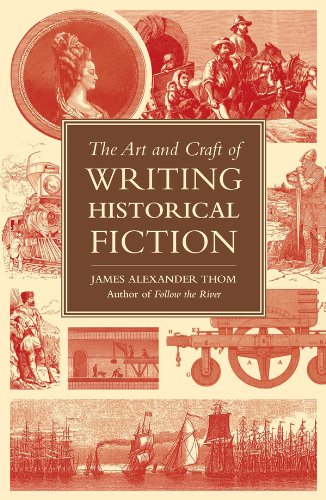The Art and Craft of Writing Historical Fiction
Since I usually review new fiction for the HNS, I was happy to try my hand at nonfiction. My assignment arrived: The Art and Craft of Writing Historical Fiction. Very few books cover the subject, so I was anxious to see what the author had to say. However, I did wonder what Thom could say that others hadn’t already said in their writing instruction books. At first, I was also disappointed that it focused on America rather than Europe, where most popular historical fiction is set, but I got over it as I followed his stories based on the expansion and exploration of the United States.
The book is broken into sixteen chapters and an index. Each of the chapters covers subdivided categories relating to the chapter title. The organization of the work is easy to follow. The author/narrator becomes a folksy grandpa who stops by to visit and entertains with his tales of adventure.
Mr. Thom, who has written many novels set in the US colonial and Revolutionary periods, writes like a man who has been directly involved in actual physical research, genealogical research and field research. (His idea is not to download bad information from Wikipedia.) As a friend of re-enactors, he has been a guest at re-enactor gatherings and gives lectures as the character he is researching. He can use the tools of the time, eat the foods and wear the clothing of the era–all while knowing that rattlesnakes smell like cucumbers (always a handy fact to hang on while tromping through the woods.)
As a researcher, he does not tell aspiring authors to cast aside facts that are pertinent to a story, but he gives them ways to organize research so it will be accessible. He demonstrates how it can be used and simplified. He also mentions that there are re-enactor groups for just about every time period, and that authors would be foolish to ignore re-enactors as a source of information since they are so full of minutely detailed information.
Jim Thom and his wife (who covered the chapter on genealogy but did not seem to get author credit, except through the text of the chapter), have an obvious love for history and historical fiction. Both novelists and historians work from different points on the same topics. If the novelist pays attention to the historian, the novel becomes more truthful as well as a more interesting story.
There are some fabulous writing-related and family-related stories held within these pages, all eminently worth the read. I would recommend this to writers both old and new: the former for the brush-up on techniques, and for the latter to give them a path to follow toward success.










